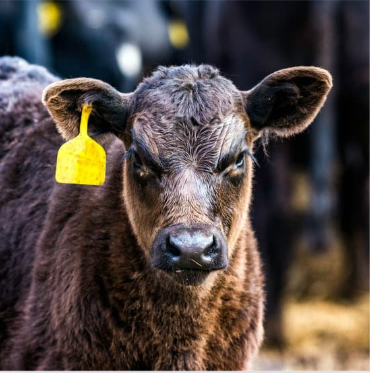
Livestock management is subject to stringent regulations to ensure food safety, animal welfare, and disease control. For farmers, compliance with these regulations is crucial but often challenging. Radio Frequency Identification (RFID) ear tags offer a technological solution that simplifies compliance while improving livestock management and record-keeping. This article explores how RFID ear tags assist farmers in meeting regulatory requirements and enhancing their operations.
Understanding RFID Technology
RFID technology operates by utilizing electromagnetic fields to automatically recognize and monitor tags attached to objects, enabling efficient and precise tracking, particularly in the case of livestock. An RFID system typically comprises three components: an RFID tag, an RFID reader, and a data processing system. The RFID tag, embedded in an ear tag, contains a microchip that stores information about the animal. When the RFID reader scans the tag, it retrieves the data and sends it to a central database for processing and storage.
Compliance with Livestock Regulations
Traceability and Disease Control
One of the primary regulatory requirements in the livestock industry is traceability. Tracing an animal’s history, from birth to slaughter, is crucial for controlling disease outbreaks and ensuring food safety. RFID ear tags provide a reliable and efficient method for achieving this traceability.
With RFID technology, each animal receives a unique identification number stored in the ear tag’s microchip. This number links to a comprehensive database containing detailed information about the animal’s origins, health records, and movements. In the event of a disease outbreak, authorities can quickly trace the source and spread of the disease, implementing measures to contain it.
Record-Keeping and Reporting
Accurate record-keeping is another critical aspect of livestock regulation compliance. Farmers must maintain detailed records of their animals, including birth dates, vaccination schedules, medical treatments, and movements. Manual record-keeping is time-consuming and prone to errors, making compliance challenging.
RFID ear tags automate the record-keeping process, significantly reducing the time and effort required. When an RFID reader scans the ear tag, it automatically updates the central database with the latest information about the animal. This automation ensures that records are always up-to-date and accurate, facilitating compliance with reporting requirements.
Animal Welfare and Identification
Regulations also mandate proper animal identification and welfare practices. Proper identification helps prevent livestock theft and ensures that animals receive appropriate care. RFID ear tags provide a tamper-proof identification method that is difficult to forge or alter.
Additionally, RFID technology allows farmers to monitor the health and well-being of their animals more effectively. By tracking each animal’s health records and movements, farmers can identify and address health issues promptly, ensuring compliance with animal welfare standards.
Benefits Beyond Compliance
Improved Efficiency and Productivity
Beyond regulatory compliance, RFID ear tags offer several benefits that improve farm efficiency and productivity. The automation of data collection and record-keeping reduces the administrative burden on farmers, allowing them to focus more on their core activities. The ability to quickly and accurately track animals simplifies herd management, reducing labor costs and increasing operational efficiency.
Enhanced Decision-Making
The wealth of data collected through RFID technology provides valuable insights that can inform better decision-making. Farmers can analyze data trends to optimize breeding programs, manage feeding schedules, and improve overall herd health. This data-driven approach leads to more informed decisions, enhancing farm productivity and profitability.
Cost Savings
The upfront cost of getting into RFID tech might be a lot, but you will end up saving a bunch in the long run. The automation of record-keeping reduces labor costs, while the improved efficiency and productivity lead to higher yields and lower operational expenses. Additionally, the ability to trace animals helps quickly and accurately mitigate the financial impact of disease outbreaks, protecting the farm’s bottom line.
Environmental Sustainability
RFID technology also contributes to environmental sustainability by promoting efficient resource use. By optimizing feeding schedules and reducing waste, farmers can minimize their environmental footprint. Moreover, the ability to track and manage livestock health reduces the need for antibiotics and other medical interventions, supporting more sustainable farming practices.
Challenges and Considerations
While RFID ear tags offer numerous benefits, there are challenges and considerations that farmers must address. The initial cost of RFID systems can be a barrier for small-scale farmers. However, the long-term benefits and potential cost savings often justify the investment.
Data security and privacy are also important considerations. Farmers must ensure that the data collected through RFID systems is secure and complies with privacy regulations. Additionally, proper training is essential to ensure that farm staff can effectively use and maintain the RFID system.
Conclusion
RFID ear tags are a powerful tool that helps farmers comply with livestock regulations while improving overall farm management. By automating traceability, record-keeping, and animal identification, RFID technology simplifies compliance and enhances operational efficiency. The benefits extend beyond regulatory compliance, offering improved decision-making, cost savings, and environmental sustainability. Despite the initial investment and challenges, the adoption of RFID technology is a worthwhile endeavor for farmers seeking to optimize their operations and ensure compliance with industry regulations.







